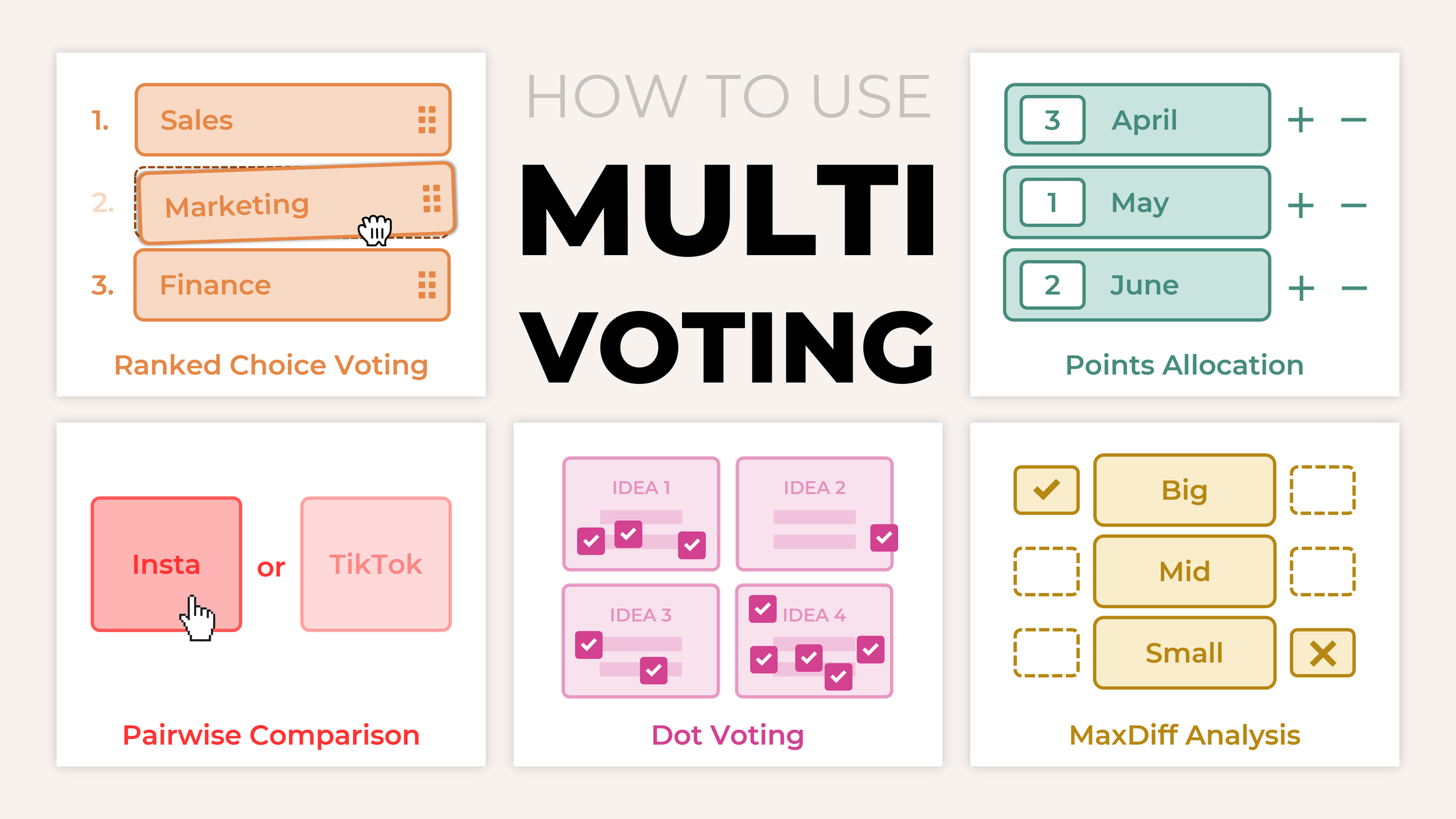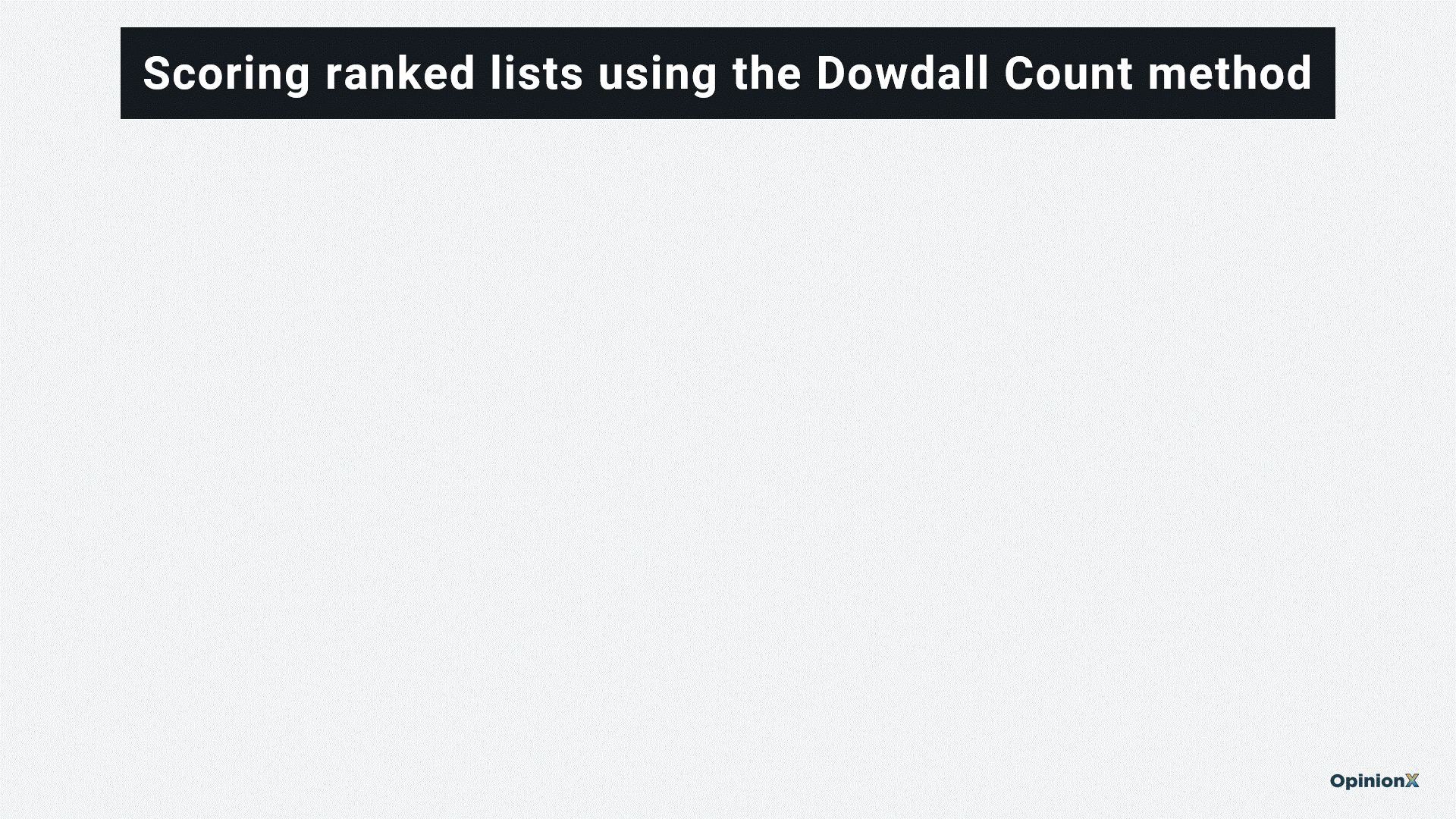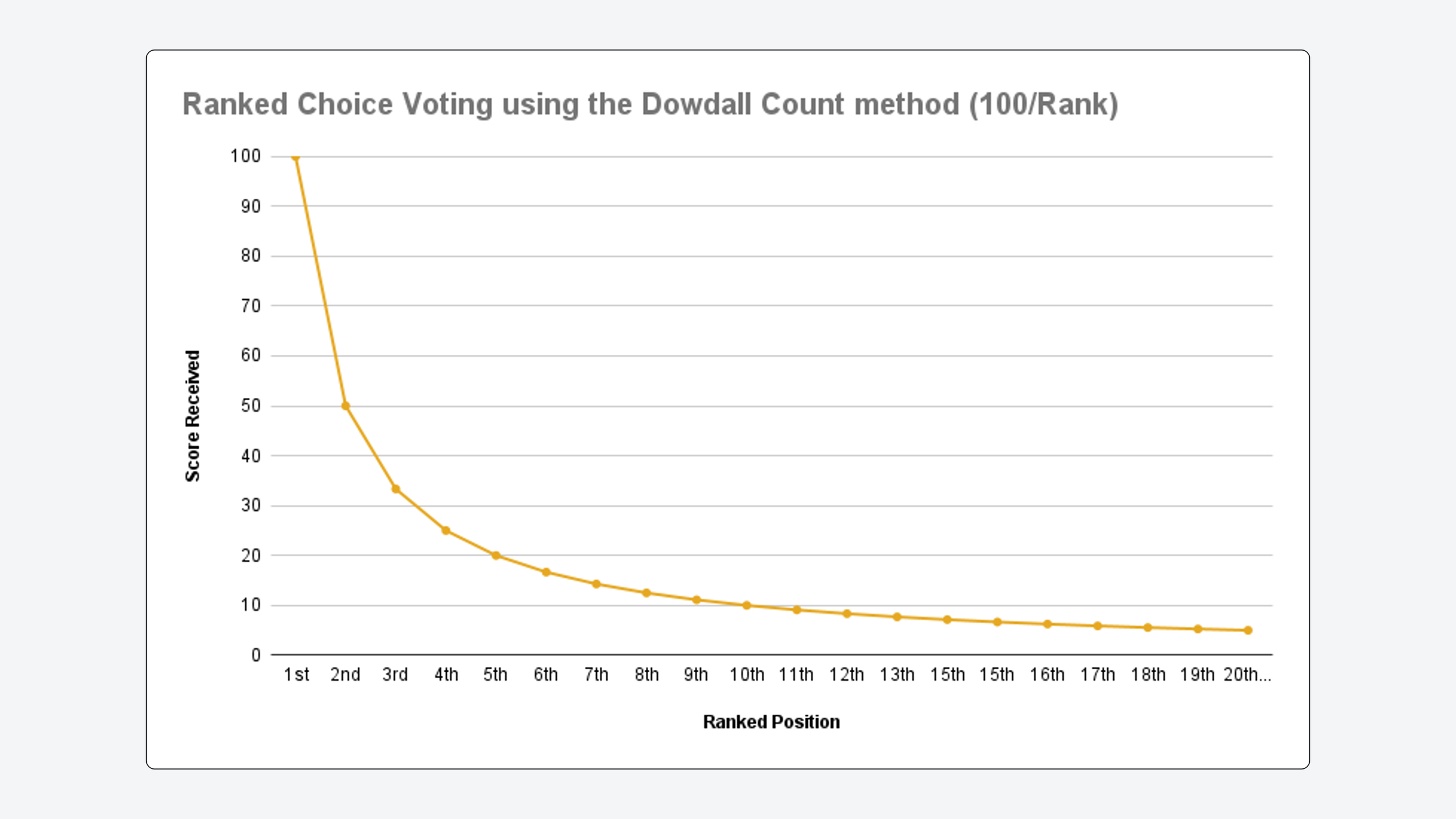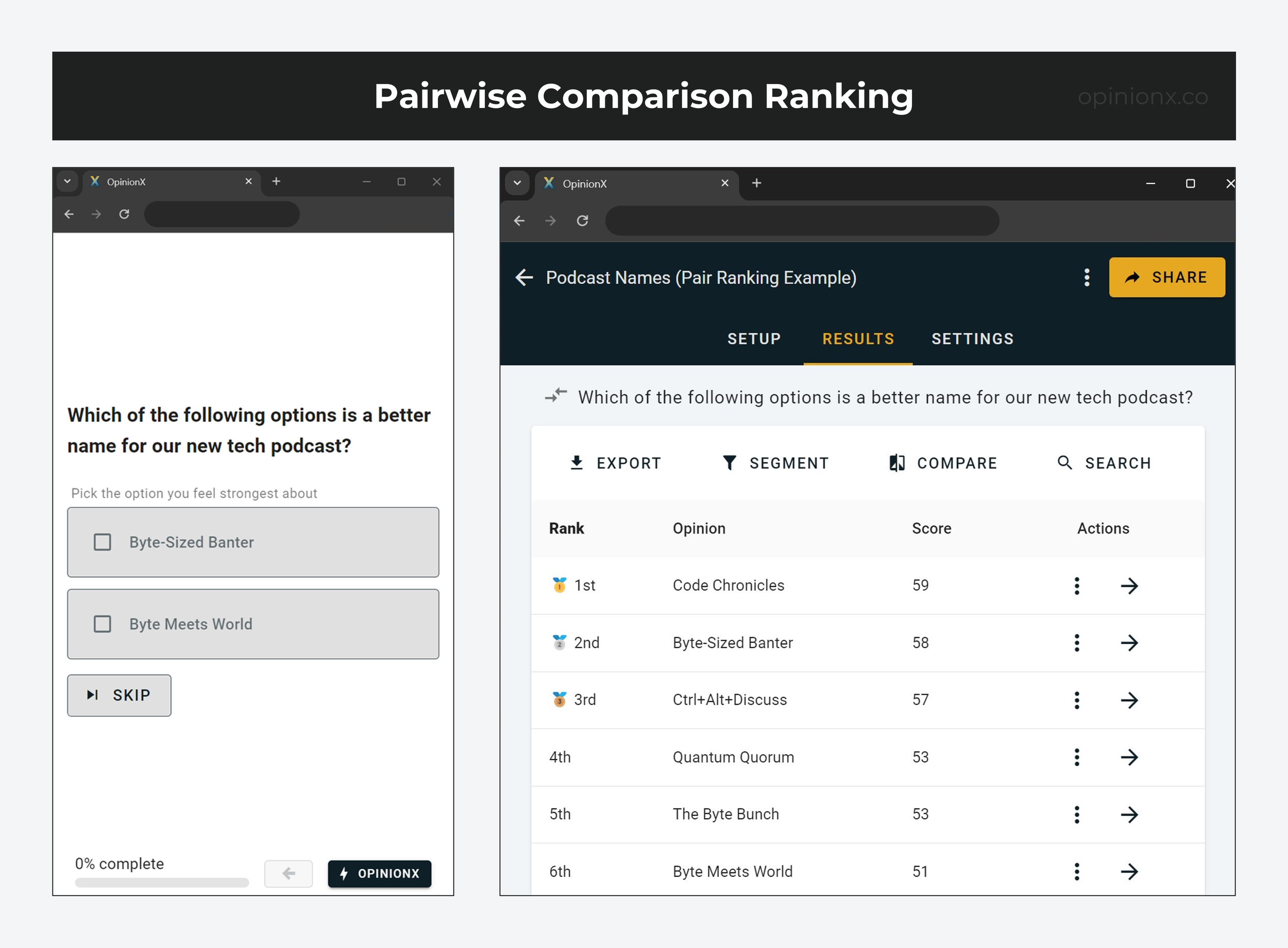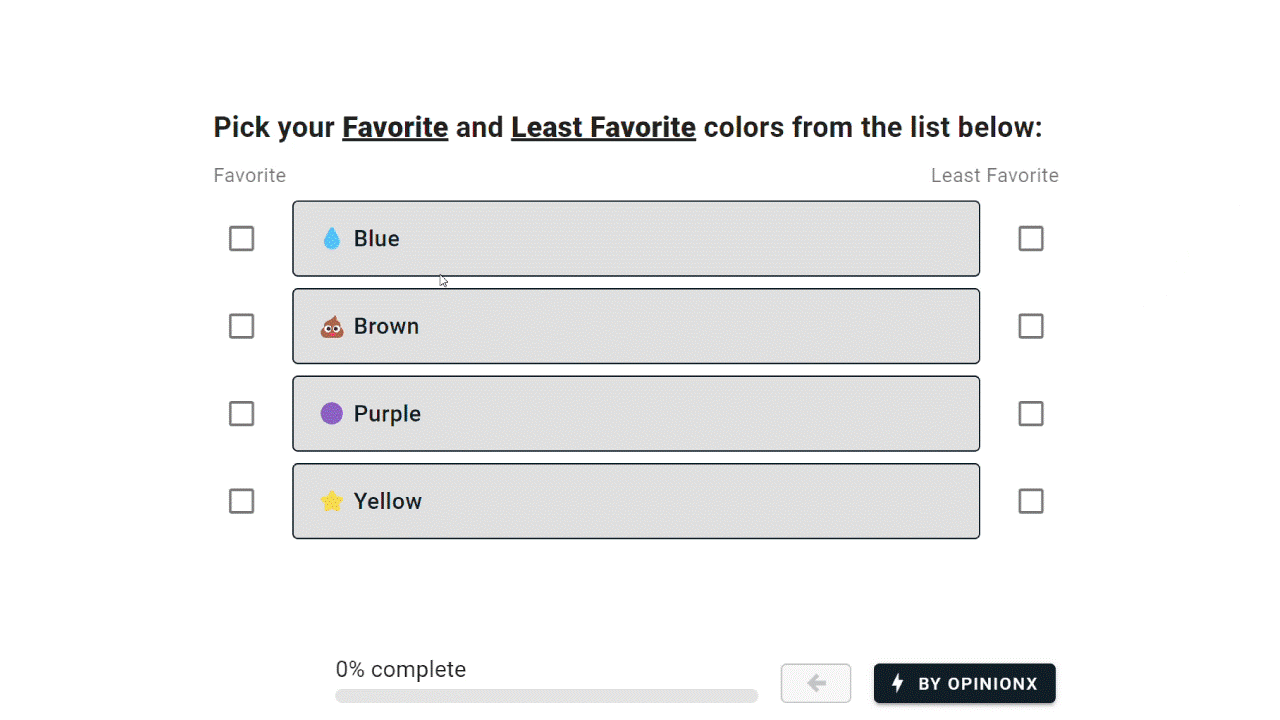Multivoting: 6 Best Tools & Techniques for Group Decisions
What is multivoting?
Multivoting is a way for a group of people to prioritize a list of options by allowing each person to vote for multiple options in order of their personal preference. It’s a popular way to make group decision-making a more participatory and consensus-driven activity.
How does multi-voting work?
There are a range of different ways that multi-voting works, but they all follow the same core principle that each participant gets to vote multiple times on the list of options. This can be done using a range of different techniques, which I’ll outline below.
Is multivoting divergent or convergent?
Divergent thinking is the process of generating many creative ideas and exploring many possible solutions, typically through free-flowing activities like brainstorming. Convergent thinking is the process of evaluating and analyzing the diverse ideas generated during divergent thinking to identify the most effective or practical solution to a specific problem or challenge.
Multivoting is one of the most popular methods of convergent thinking. It helps teams turn a list of creative ideas or subjective options into a prioritized list so that they can decide which to pursue. Therefore, multivoting is a natural follow-on step after any brainstorming or divergent process. An example of this is Customer Problem Stack Ranking, which is a popular research technique that teams use to identify which problems their customers are most urgently trying to solve.
What techniques can you use for multivoting?
The six most popular techniques for multivoting are:
6. Dot Voting
1. Ranked Choice Voting
Ranked choice voting is an intuitive and well-known ranking method that almost everyone has used at some point in life. The entire list of options is presented together and the participant is asked to rank them in order based on their personal preferences.
^ Example of a ranked-choice multivoting survey hosted on OpinionX
There are many different ways to turn ranked choice voting into numerical scores but my personal favorite for multivoting is called the Dowdall Count method, which gives each option a score of 100/rank (for example, if you rank an option 4th place will get 100/4 = 25 points).
The Dowdall Count method is great for multivoting via ranked choice voting because:
It uses a simple scoring formula that is easy for everyone to understand.
It gives everyone’s top preference the same amount of votes, regardless of how many options they rank.
It gives more weight to top-ranked options and asymptotes for lower-ranked options, which is a realistic representation of how people’s preferences tend to look in real life.
It lets participants rank different amounts of options without creating an adverse impact on the end result, meaning people can just pick however many options they think are relevant.
It allows the multivote facilitator to set specific conditions like a minimum and/or maximum number of options that each person can vote for.
You can create a free ranked choice voting survey on OpinionX for your multivoting exercise. OpinionX lets you create unlimited surveys with unlimited questions and unlimited participants for free. It uses the Dowdall Count and the paid version only costs $10/month to add customizations like a min/max number of votes per person.
— — —
2. Points Allocation
Points Allocation, also known as Constant Sum, is a survey format where each participant is assigned a pool of points that they can spend on a list of options based on their own personal preferences. Points Allocation is a popular method for group ranking exercises because it is very straightforward and intuitive to use.
^ Example of a points-based ranking survey hosted on OpinionX
In the embedded example above, you can see that I followed the traditional multivoting format where I instructed participants to allocate their 10 points as 4, 3, 2 and 1. Points-based ranking surveys are free to create on OpinionX and allow unlimited participants for no extra fee. OpinionX’s paid plan allows the default 10 points to be customized to any amount.
— — —
3. Pairwise Comparison
My favorite voting format for ranking a list of options is pairwise comparison, which breaks the list of options into a series of head-to-head pair votes. When you’ve got a long list of options, like 10 or more, showing the full list together can be a lot of cognitive load for people to rank. Pairwise comparison therefore offers a great alternative for voting on longer lists of ideas or options.
Unlike the other two ranking methods, pairwise ranking measures people’s preferences without forcing people to consider and articulate what they actually care about overall. This makes it great for ranking subjective lists that are difficult to compare and rank in a single list.
^ Example of a pairwise ranking survey hosted on OpinionX
Turning pairwise votes into scores for ranking is pretty simple — just calculate the total number of wins divided by the total number of appearances. For example, if an option appeared in 200 pairs and won 60 times, its score would be 30%.
You can create free pairwise ranking surveys on OpinionX, which automatically picks the head-to-head pairs and calculates all your results on a simple 0-100 scale. OpinionX also comes with a calculator that you can use to figure out how many pairs each person should vote on to produce a robust result.
— — —
4. MaxDiff Analysis
MaxDiff Analysis ranks people’s preferences by asking them to choose the best and worst option from a group of 3-6 statements. Each time the participant votes, a new set of statements from the overall list of ranking options is shown.
Also known as Best/Worst Scaling, the “best” and “worst” labels in a MaxDiff survey can be changed to suit your research occasion, such as Favorite / Least Favorite, Top / Bottom, or Most Preferred / Least Preferred. While most MaxDiff surveys stick to just 3-6 statements per voting set, you can use more if needed.
^ Example of a free MaxDiff survey hosted on OpinionX
MaxDiff scoring works pretty similar to the formula we already saw for Pairwise Comparison — take the total number of “best” votes, subtract the total number of “worst” votes, and then divide by the total number of appearances, ie. (best-worst)/appearances. To figure out the variables in a MaxDiff survey, I recommend using the built-in MaxDiff calculator on OpinionX, which will help you pick the right number of options per set and sets per participant based on the total number of ranking options and expected number of participants.
You can create unlimited free MaxDiff surveys on OpinionX with as many participants as you’d like. OpinionX also offers a premium version where you can customize the “best/worst” labels, increase the number of options per set above 3, and add other advanced configurations like conditional branching.
— — —
5. Consensus Voting
Sometimes, it’s more important to find consensus perspectives that everyone agrees on rather than simply the highest-voted idea. Agreement ranking — showing participants a series of statements one by one and asking them to agree/disagree with each — is a well-studied consensus mechanism used in many public consultation projects (eg. vTaiwan wikisurvey).
— — —
6. Dot Voting
Dot voting is like the traditional version of multi voting. Each participant is given a number of “dots” (usually post-it notes or stickers) which they stick to a poster to vote for. This can be done in person with physical dots or on a virtual whiteboard space. It is a popular voting method used during in-person focus groups. While it offers a quick and experiential method for participants, it often requires manual tallying, doesn’t allow any additional research or questions to be asked, and can’t be segmented or filtered later to compare rankings for different groups.
— — —
How many votes does each person get in multi voting?
There is no fixed amount of votes that each person gets in multivoting — instead, this should be based on your specific needs. I personally prefer to use a ranked choice voting survey where each participant can rank as many options as they’d like (using the Dowdall Count method so that it is scored appropriately).
If you want to follow a more traditional approach, I would recommend using a Points Rank format where each participant is given 10 points and asked to allocate 4 to their favorite, 3 to their second favorite, 2 points for 3rd place, and then 1 point for their fourth and final preference vote.
How do you use multivoting as part of Six Sigma / DMAIC?
Six Sigma (6σ) is a set of techniques and tools used for process improvement. It was introduced by Motorola engineer Bill Smith in 1986 and quickly became popular as a way to help teams achieve specific value targets like reducing pollution or increasing customer satisfaction.
The most popular methodology in Six Sigma is called DMAIC (pronounced "duh-may-ick", /də.ˈmeɪ.ɪk/), which is used to improve existing business processes. DMAIC is an acronym which stands for:
Define the system, the customer’s requirements, and the project goals.
Measure key aspects of the current process, collect relevant data, and calculate the "as-is" process capability.
Analyze the data to investigate and verify cause and effect, determine what the relationships are, identify the root cause of the defect under investigation.
Improve or optimize the current process based upon data analysis and standardize work to create a better process.
Control the future state process to ensure that any deviations from the target are corrected before they result in defects.
At each of these stages, divergent and convergent thinking are essential for mapping the range of possible decisions and consulting the wider stakeholder group as part of the decision-making or prioritization process. Multivoting serves as a powerful tool within the DMAIC framework that helps teams to identify the most significant issues and solutions in a democratic, inclusive way. That is why Six Sigma leaders are often experienced multi voting facilitators too!
Get Started With Your Own Multivote!
Creating a multi-voting survey is quick and easy (and free!) on OpinionX — just pick from any of our 6 ranking formats, add your initial list of voting options, and share the link with your team or stakeholders.
— — —
Enjoyed this blog post? Subscribe to our free newsletter where we share actionable user research strategies with thousands of teams:

